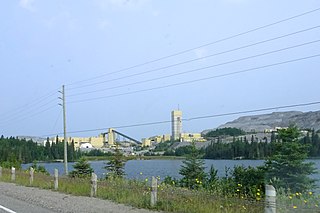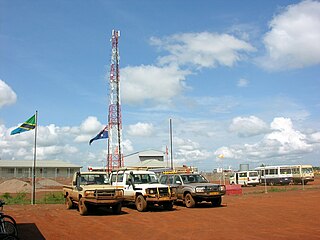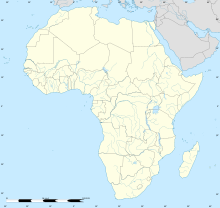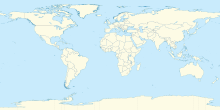
Barrick Gold Corporation is a mining company that produces gold and copper with 16 operating sites in 13 countries. It is headquartered in Toronto, Ontario, Canada. It has mining operations in Argentina, Canada, Chile, Côte d'Ivoire, Democratic Republic of the Congo, Dominican Republic, Mali, Papua New Guinea, Saudi Arabia, Tanzania, the United States and Zambia. In 2019, it produced 5.5 million ounces of gold at all-in sustaining costs of $894/ounce and 432 million pounds of copper at all-in sustaining costs of $2.52/pound. As of 31 December 2019, the company had 71 million ounces of proven and probable gold reserves.
Goldcorp Inc. was a gold production company headquartered in Vancouver, British Columbia, Canada. The company employed about 15,800 people worldwide, engaged in gold mining and related activities including exploration, extraction, processing and reclamation. Goldcorp’s operating assets included four mines in Canada, two mines in Mexico, and four in Central and South America. As of the third quarter of 2014, Goldcorp was the world's fourth-largest producer of gold. On January 14, 2019, Goldcorp agreed to a merger acquisition by Newmont Mining Corporation, the world’s second-largest producer of gold, with the merged “Newmont Goldcorp” to be the world’s largest producer.
NOVAGOLD is a Canadian company that is pursuing the development of the Donlin Gold mine in Alaska. Headquartered in Vancouver, the company is listed on the NYSE American and the Toronto Stock Exchange. The company was founded in Dartmouth, Nova Scotia, in 1984, to pursue exploration and development of mining properties. While the company bought and sold numerous exploration rights across North America, they have principally focused on four properties. They developed and operated the Murray Brook Mine in Nova Scotia from 1989 to 1992 and developed the Rock Creek Mine in Alaska but defaulted on financial obligations forcing it to close shortly after opening in 2008. They conducted exploration and development work on the Galore Creek mine in British Columbia between 2003 and 2018 but sold its interests. The development of the Donlin Gold mine has been pursued since the formation of a joint venture with Barrick Gold in 2012.

Mining in Papua New Guinea is an important part of the Papua New Guinea economy.
The Burbanks Gold Mine is a gold mine located 9 km south east of Coolgardie, Western Australia.

The Geita Gold Mine is an open pit gold mine located in the Geita District of the Geita Region of Tanzania. It is operated by AngloGold Ashanti.
The Darlot-Centenary Gold Mine is a gold mine located 58 km east of Leinster, Western Australia.
The Lawlers Gold Mine is a gold mine located 23 km south west of Leinster, Western Australia, owned by Gold Fields. Gold Fields purchased the mine in late 2013 and combined it with its nearby Agnew Gold Mine. The process plant of the mine was subsequently sold and dismantled while no mining was carried out at Lawlers.
The Plutonic Gold Mine is a gold mine located 82 km east-northeast of Peak Hill, Western Australia.
The Mount Morgans Gold Mine is a gold mine located 37 km west-southwest of Laverton, Western Australia.

The Hill 50 Gold Mine, now referred to as the Mount Magnet Gold Mine, is a gold mine located 4 km north-west of Mount Magnet, Western Australia. The mine was, until July 2010, owned by Harmony Gold and had been placed in care and maintenance since 2007. In July 2010, Harmony sold the mine to Ramelius Resources, owner of the Wattle Dam Gold Mine, for A$40 million.

The Abitibi gold belt is a region of Canada that extends from Wawa, Ontario to Val-d'Or, Quebec. Located within the mineral-rich Abitibi greenstone belt, the gold belt is an established gold mining district having produced over 100 mines, and 170 million ounces of gold since 1901. Timmins, a town founded in 1912 following the Porcupine Gold Rush and subsequent creation of the Hollinger Mines, McIntyre Mines and Dome Mine, which was one area in the region that experienced a gold rush, beginning in 1909. The Kerr Addison Mine in Virginiatown was at one time Canada's largest gold producing mine. Many of the towns readily acknowledge gold mining as part of their history, some being named after gold. One of Canada's 'large roadside attractions' is a 12-foot replica of a 1908 gold sovereign built to commemorate Canada's first gold coin which was made using gold from the Kerr Addison owned Kerr-Addison mine.
Acacia Mining is a gold mining business operating in Tanzania, with exploration properties in Kenya, Burkina Faso and Mali. It is listed on the London Stock Exchange and the Dar es Salaam Stock Exchange and is a constituent of the FTSE 250 Index until it was re-acquired by Barrick Gold in September 2019.
Tulawaka Gold Mine was a combined underground and open pit gold mine located in the Biharamulo district, in the Kagera Region of Tanzania. It is operated by African Barrick Gold, who owned 70% of the mine. The remaining 30% was owned by MDM Mines.
Bulyanhulu Gold Mine is an underground gold mine in the Shinyanga Region of Tanzania, located 55 kilometres south of Lake Victoria. It is one of three gold mines owned by Acacia Mining plc, formerly African Barrick Gold plc, a company owned by Barrick Gold, which is listed on the London Stock Exchange, and operates in Tanzania. Acacia also owns Buzwagi Gold Mine and the North Mara Gold Mine.

Buzwagi Gold Mine is an open pit gold mine in the Shinyanga Region of Tanzania, located 6 kilometres southeast from the town of Kahama. It is operated by Acacia Mining.
North Mara Gold Mine is a combined open pit and underground gold mine in the Tarime District of the Mara Region of Tanzania. It is one of three gold mines of Acacia Mining plc, a company listed on the London Stock Exchange, that operates in Tanzania, the other two being Bulyanhulu and the Buzwagi Gold Mine.
The Kirondatal Gold Mine was a gold mine in the Singida Region of Tanzania.
The Golden Pride Gold Mine is an open pit gold mine located in Nzega District of the Tabora Region of Tanzania. It is operated by Australian mining company Resolute Mining.

The El Indio Gold Belt is a mineral-rich region spanning the border between Chile and Argentina that contains large quantities of gold, silver and copper. On both sides of the border the belt is located within the Andes. The El Indio mine within the district was the first modern mine in Chile to produce gold as its main product. In Chile the main precious metal containing mineral is enargite. The El Indio belt is bordered in the north by another gold-silver mining district known as the Frontera District. Rodalquilarite, alunite and poughite are some of the minerals present in the area. The deposits of the belt formed during the Late Miocene period.









